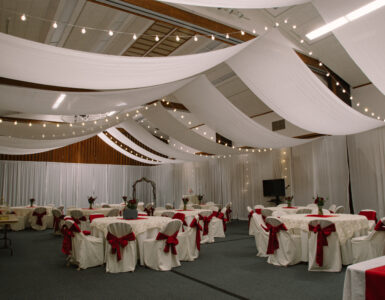An all-out attack on germs can help your family fight cold and flu bugs.
Studio 5 Contributor, Teresa Hunsaker, has cleaning tips to help keep
illnesses from spreading.
The last thing that people want to do when they, or someone they love, is
sick, is clean. However, minimizing the potential for “passing it on” is a good
idea. With a few key supplies and just a few minutes of time, you can move
through the house obliterating 99% of “bug” and flu germs. I do say the
house, but start first with the areas that have been primarily occupied by the
sick person.
Man of these tips are perhaps already known by most, but some of it may be
new to consider. Here is a quick review of the basics of cleaning up after(and
during) the cold or flu:
· Wash hands often!
· Disinfect door knobs, faucet knobs, light and lamp switches, phones,
computer keyboards, countertops, etc. One possible way to do this is a
spray disinfectant like Lysol. Another option is a 1:10 ratio of bleach to
water…so 1 cup bleach to 10 cups water. (Some sources say ¾ cup bleach to
a gallon of water is sufficient) Place in your kitchen sink and use a soft clean
cloth to wipe down the above surfaces. Remember to wipe down cupboard
handles, and refrigerator/freezer handles as well.
· Disinfect tooth brushes by soaking in hydrogen peroxide…or simply get
a new one for each person. Also disinfect the tooth brush holder/cup with
the previously mentioned bleach solution.
· Wash dishes (especially of the sick person) in a dishwasher with some
bleach added to the dishwasher. Some families use paper cups to drink from
when one is sick.
· You will also need to face the dreaded toilet bowl and scrub with either
bleach or other disinfecting solution. Clean both the exterior and the
interior, and be sure to clean the handle.
· Wash linens and bedding in as hot a water as the item can handle…
adding even a couple of tablespoons of bleach to the washer of water before
adding the articles will aid in the disinfecting and not harm the fabric.
· Don’t forget to wash hand towels, dish towels, sponges, and bath towels
in as hot a water as they can handle. Again, adding some disinfectant to the
wash is always encouraged. Follow manufacturers recommendations.
· While we are addressing fabrics and textiles, don’t forget about that
favorite cuddly blanket…it needs to be cleaned as well.
· Kids toys that can be placed in the dishwasher is a great way to go for
disinfecting and sanitizing them.
· Pens, pencils, markers, and crayons may also need to be disinfected with
a spray.
· Consider sanitizing car door handles, steering wheels, and seatbelt
handles where the sick person may have touched.
· Mop hard floors with a disinfecting solution as well.
· Pillows also need to be cleaned. For those that can be washed, wash.
After washing place them in a dryer at the hottest heat setting possible for
your type pillow. If it cannot be washed, spray with an antimicrobial spray.
Then place in the dryer on the hottest heat possible. This will help kill at
least some germs.
Additional Disinfectants
While bleach is probably the most effective and least expensive disinfectant
available, it is very corrosive and toxic, something that needs to be dealt with
carefully. There are others, and depending on the surface and items, could
be substituted.
· Rubbing Alcohol
· Hydrogen Peroxide—great for cleaning dish scrubbers, nail brushes, hair
brushes, the refrigerator, sponges, cutting boards.
· Vinegar—most microorganisms and germs to not like high acid
environments, so vinegar is actually considered a disinfectant, and can be
used most places that these others are also used for.
· Lysol and other similar commercial products.
By the way, the term “disinfect” means to reduce/kill most of the viable
microorganisms present.
Additional Notes:
· Always read labels on any chemicals you may be using.
· Janitorial supply stores have industrial and hospital grade sanitizers you
may want to invest in if you prefer not to use bleach.
· Open windows and doors for ventilation.
· For those who do not want to use bleach, here is a simple disinfecting
solution: 1 cup water, ½ cup tea tree natural castile soap (available at health
food stores), 1 tsp borax powder, ½ tsp lavender essential oil, and ½ tsp tea
tree oil. Mix together until borax powder is dissolved. Place in a spray
bottle. Spray surface, wait one minute, and wipe dry.
Keep yourself, your family, and visitors healthy by disinfecting your home
every two or three weeks.
If you have any questions, contact Teresa Hunsaker at the Family and
Consumer Science Education Department at the Weber County USU Extension
office at (801) 399-8203 or online at www.extension.usu.edu/weber
*There is a product available online that is recognized by the Center for
Disease Control. It’s trade name is Safe Space and they have two or three
different products for assisting in the disinfecting process. One of the
products is an antiviral/antibacterial “bomb” that is intended to finish off the
job once you have cleaned.















Add comment